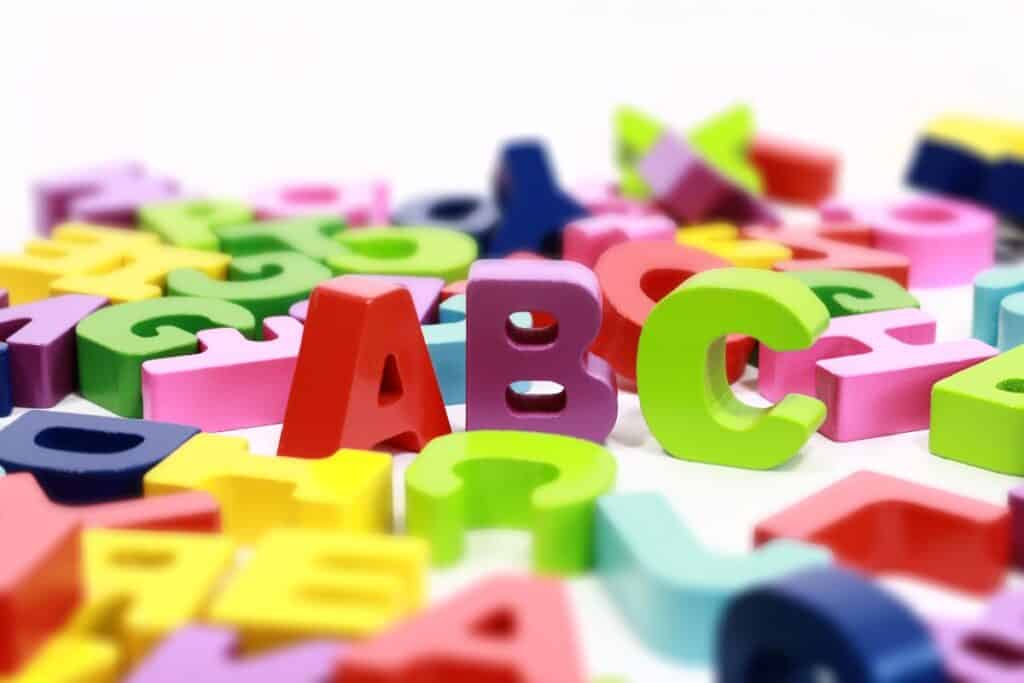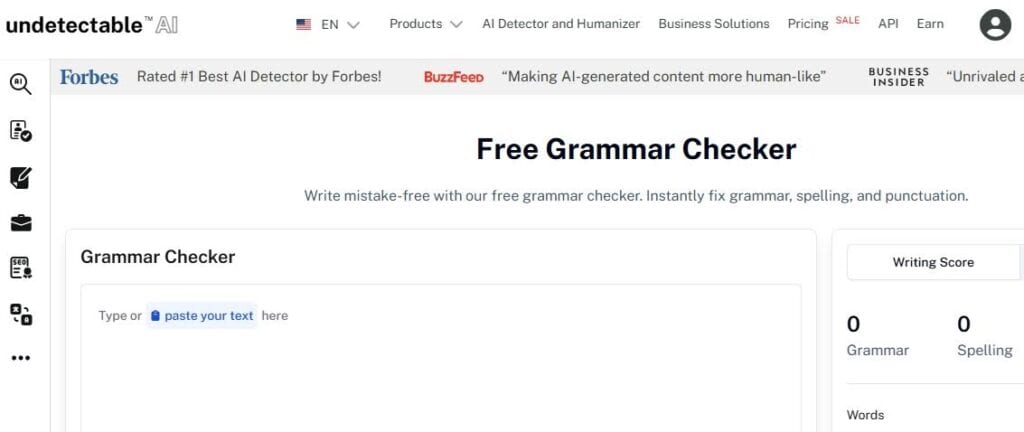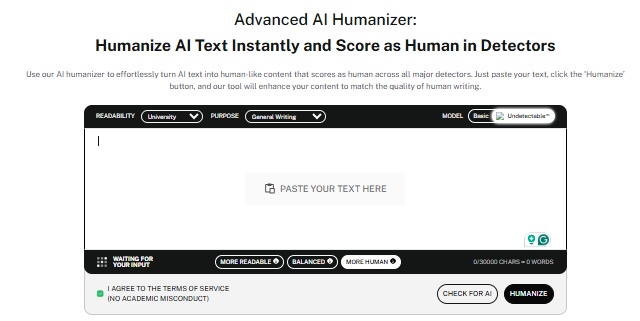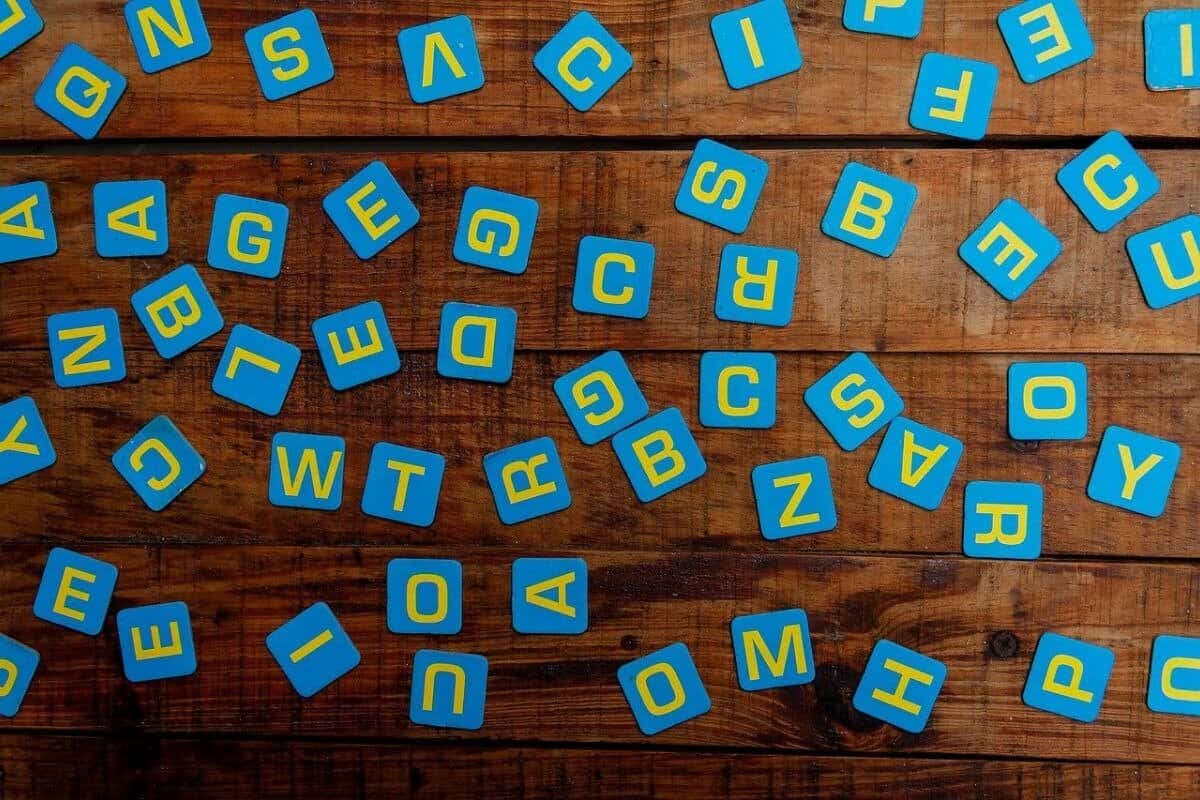To learn the construction blocks of language necessarily begins with learning the vowels and consonants.
These are some of the vital sounds that create the basis of each word we speak, write, and read. Have you ever wondered what are vowels and consonants? Well, this is the entire information you need.
Whether as a student learning phonics, a curriculum developer or simply as someone who has a keen interest, the principles of vowels and consonants play a crucial role of proper communication.
Key Takeaways
- Any letter (A, E, I, O, U and Y in some cases) produced with an open vocal tract and forms the mass of the syllable is a vowel.
- The remaining 21 (which require some obstruction of the air in the act of pronunciation) are called consonants.
- The difference between the vowels and the consonants is achieved through the assistance of the physical sound production in the mouth.
- There are numerous sounds in vowels and consonants and they are founded on their location and setting in the words.
- Such variations are necessary in understanding how to pronounce and spell words.
What Are Vowels?
The vowels form the basis of the syllables and produce the melodic, musical character of speech.
There is free air circulation in your mouth with no obstruction of any kind, and therefore, clear, resonant sounds are possible.
The English vowels: A, E, I, O, U and sometimes Y are the basic elements which make words pronounceable and lend them a rhythmic character.


Never Worry About AI Detecting Your Texts Again. Undetectable AI Can Help You:
- Make your AI assisted writing appear human-like.
- Bypass all major AI detection tools with just one click.
- Use AI safely and confidently in school and work.
Definition of a Vowel
A vowel is a sound of speech that occurs when air passes through the vocal tract without much hindrance.
To know what are consonants and vowels, it is necessary to say that the center of the syllables is called vowels and may also be characterized as open and resonant.
When pronouncing a vowel, your mouth is left open so that the sound waves can move easily through your mouth and the vocal cords.
In linguistic terms, vowels are characterized as possessing three significant features that include;
- They are the tallest in a syllable
- They can be full syllables and
- They are not articulated in a manner that impedes the airflow in your mouth or throat.
The 5 Main Vowel Letters: A, E, I, O, U
In studying what is consonants and vowels, one should be aware that the English language contains five main vowel letters, they are:
- A: This is a very versatile vowel in words such as cat, cake, and father. It can sound different according to the structure of words and the letters around it.
- E: It appears in words like bed, tree, and silent. The letter E is especially interesting as it is often used at the end of words where they are not pronounced but it changes the pronunciation of other vowels in the word.
- I: Found in words like sit, kite, and machine. This vowel may produce short and clipped as well as long and drawn-out pronunciations.
- O: It can be found in “hot,” “home,” and “to.” O, as well as any other vowel, may sound dramatically different depending on its location in a word.
- U: Occurs in such words as cup, cute, and put. This vowel tends to produce some of the most diverse sounds in the pronunciation of the English language.
Sometimes Y as a Vowel
Letter Y is an exception in English phonetics as it can be a vowel and a consonant depending on how it is applied in a word.
Y is a vowel when it has the sound of a vowel (when it is in the middle or final position in a syllable).
- Y functions as a vowel in words: “gym,” “cry,” “myth,” and “happy.” In this case, it creates sounds similar to the vowels I and E.
- Y acts as a consonant when it appears at the beginning of words or syllables: “yes,” “young,” or “beyond.”
Short vs Long Vowel Sounds
The contrast between the short and the long vowel sounds is also based on the pronunciation and the spelling.
This distinction affects the sounding of the words and in most cases the word meaning.
Consonant-vowel-consonant (CVC) patterns are found in words that usually have short vowel sounds. Examples include:
- A as in “cat,” “hat,” “trap”
- E as in “bed,” “red,” “step”
- I as in “sit,” “hit,” “trip”
- O as in “hot,” “pot,” “shop”
- U as in “cup,” “sun,” “truck”
Long vowel sounds often occur when vowels “say their name” and are commonly found in words ending with silent E or in vowel combinations.
Examples include:
- A as in “cake,” “name,” “brave”
- E as in “tree,” “meet,” “scene”
- I as in “kite,” “time,” “shine”
- O as in “home,” “note,” “scope”
- U as in “cute,” “tune,” “duke”
Examples of Vowel Use in Words
Vowels form the melodic basis of language and are found in all words in the English language. Take the case of vowels in the following example:
- We find four vowels (E-U-A-I-O) in the word “education” and they form a rhythmical pattern that makes the word pronounceable. Devoid of vowels, we would get the word, dctn, which cannot be pronounced as a word.
- Another example is the word “unnecessary”. If we remove the vowels (U-E-E-A), we will have nncssry, which will make no sense as a word.
What Are Consonants?

Consonants are the skeleton of words and they are pronounced when the air movement is partially or totally obstructed by the mouth, tongue, lips or teeth.
These 21 letters of the English language, together with the vowels, form intelligible speech, and these are the sounds that give a certain word a different sound in comparison to another word.
Definition of a Consonant
To get the entire picture of what is vowels and consonants we need to consider consonants as sounds of speech which are produced as a result of the air that passes out of the lungs being partly or completely blocked by the tongue, lips, teeth or any other structure of the mouth.
Unlike vowels, consonants must entail the narrowing or blocking of the airflow in a manner that gives the characteristic sounds a structure and definition to the words.
The word “consonant” is a Latin term, which means “to sound with”, and this is why they are put together with vowels and make sense in the language.
The consonants provide the skeletal framework on which the words assume a form and gain a shape of their own whereas the vowels constitute the resounding core.
The 21 Standard Consonant Letters
You might be wondering how many vowels and consonants are in the English Language.
There are 21 consonant letters in the English language (B, C, D, F, G, H, J, K, L, M, N, P, Q, R, S, T, V, W, X, Z), each capable of producing one or more distinct sounds. Each consonant has its own characteristics and pronunciation rules.
They include:
- Stop Consonants: B, P, T, D, K, G. They create a complete blockage of airflow.
- Fricative Consonants: They include F, V, S, Z and they lead to turbulence of airflow.
- Nasal Consonants: M and N, which allow direct airflow through the nose
- Liquid Consonants: These include L and R which have flowing qualities.
- Glide Consonants: Example is W, which transitions smoothly into vowels.
Consonant Sounds vs Letters
What makes English phonetics one of the most problematic is the fact that consonant letters do not always have the same sound.
There are numerous consonants that are capable of more than one sound on the basis of their location in a word and the surrounding letters.
As an example, the letter C may sound as K (cat) or as S (city). The G letter may be pronounced hard (go) and soft (gentle).
Other consonant combinations produce totally new sounds like CH, SH, TH, and PH.
Moreover, there are several consonant sounds, which are depicted by more than one letter. Examples include the sound F can be spelled as F (fish), PH (phone) or even GH (laugh).
Examples of Consonant Use in Words
Consonants are the main skeleton in words.
- The word “strength” has seven consonants (S-T-R-N-G-T-H) and one vowel (E). This shows how sounds can be compounded using consonants. It also demonstrates how consonants can cluster together to create complex sounds.
- Other words such as “banana,” indicate how consonants and vowels are interchanged to produce rhythm. The combination of consonants and vowels forms the pronunciation of the language.
Vowel and Consonant Sound Differences

Below are the sound differences between the vowel and consonant sounds:
Mouth, Tongue, and Vocal Cord Positions
The actual construction of the vowels and the consonants is a matter of adjustment of your mouth, tongue and your vocal cords.
It is by the knowledge of these differences that one can know why vowels and consonants sound different and they also have different uses in speech.
When vowels are involved, your mouth is reasonably open, and this gives a clear path for sound waves. It reorganizes your tongue to produce the various sounds of vowels.
For instance, your mouth moves high and forward to produce the vowel sound of ‘ee’, low and backward to produce the vowel sound of ‘ah’, and rounded lips to produce the vowel sound of ‘oo’.
The vocal cords vibrate regularly and create the resonant, singing quality of vowel sounds.
Consonant production involves strategic obstruction of airflow. Your tongue, lips, and teeth work together to create barriers, redirections, and modifications of the air stream.
For example, when saying “B,” your lips completely block airflow momentarily before releasing it in a small burst.
Voiced vs Voiceless Sounds
Vowels and consonants are either voiced or voiceless, that is, there is a vibrated vocal cord or not.
- Voiced Sounds: These are sounds vibrated by the vocal cords. They consist of all the vowels and consonants such as B, D, G, V, Z, L, M, N, R. This vibration can be felt by touching your throat when you make such sounds.
- Voiceless Sounds: Voiceless sounds do not involve the vibration of the vocal cords and are consonants such as P, T, K, F, S and H. These are the sounds that do not need the vibration of the vocal cords and are dependent on the position of the mouth apparatus and the flow of air.
This distinction is crucial for understanding pronunciation patterns and spelling rules.
Continuous vs Stop Sounds
The difference between the continuous and stop sounds also plays a great role and affects the manner in which sounds combine in speech.
- Continuous Sounds: This may be long-lasting and includes vowels and consonants like F, S, L, M, N, R. These are sounds you can hold as long as you have breath.
- Stop Sounds: This involves a complete blockage of airflow followed by a quick release. These include consonants like P, B, T, D, K, and G. You cannot sustain these sounds as they are produced in brief bursts.
This variation influences the way in which sounds are intertwined within words.
It determines the patterns of pronunciation, the development of accents and the rhythm of the speech.
Undetectable Ask AI can help you in case you are confused about how to visualize mouth positions, articulation patterns, and vocalization differences in each sound type for your school project.
It generates elaborate descriptions and visualizations that bring abstract phonetic concepts into reality.

Vowel and Consonant Charts
Vowel charts typically organize sounds by tongue position (front, central, back) and mouth opening (high, mid, low).
This methodical way of thinking assists in understanding why some vowel sounds appear to be related and how differences in accent are frequently a matter of moving these positions a little.
Consonant charts, however, are grouped according to where and how sounds are produced in the mouth (lips, teeth, tongue tip, etc.) and how they are produced (stopping airflow, creating friction, etc.).
This organization explains the reason why some consonant replacements are frequent in various languages and dialects.
Rules and Patterns
There are many patterns and rules that English phonetics follows, but there are exceptions to most of them.
Patterns that assist with pronunciation and spelling are listed below:
- Silent E Rule: A word with silent E at the end will tend to make the preceding vowel long (hat/hate, bit/bite, cut/cute). This is a rule that is effective since the silent E indicates a different vowel pattern that alters the sound of short vowels to the long ones.
- Consonant Doubling: Double consonants frequently indicate that the preceding vowel is short (hopping vs hoping, dinner vs diner). The doubled consonant creates a “closed” syllable that keeps the vowel sound brief and clipped.
- Vowel Groups: The frequent vowel groups form routine sounds: AI tends to have a long A sound (rain, brain), OA tends to have a long O sound (boat, coat) and EE tends to have a long E sound (tree, bee). There are regular patterns in such combinations that render the reading smooth.
- C and G Rules: The C at the beginning of the word is pronounced as s before E, I and Y (city, cent, cycle); before A, O, and U (cat, coat, cup), it is pronounced as k.
Likewise, G is pronounced softly before E, I and Y (gentle, giraffe, gym) and harshly before A, O and U (gate, go, gum). - Y as a Vowel Pattern: Y is a vowel when it occupies the middle or final position of syllables (gym, happy, cry).
In order to be precise in the application of these phonetic rules to written work, our Grammar Checker can be employed to find the most common spelling errors that occur when the rules are applied wrongly or when the exceptions to the rules override general trends.

Our AI Humanizer can also rewrite instruction materials, including those employed in education, into interesting and age-appropriate phonics instructions.
The tool makes phonics teaching more engaging to students of all ages due to its capability to transform complicated linguistic concepts into enjoyable learning processes.

Our AI Checker ensures your educational examples and phonics materials are truly human-written and accurate.
It helps verify that learning content maintains clarity, originality, and a natural teaching tone that feels authentic to students.
Put your best professional foot forward with Undetectable AI, or explore our AI Detector and Humanizer in the widget below!
FAQs About Vowels and Consonants
Why Is “Y” Sometimes a Vowel?
Y’s classification depends on its sound and position within words. When Y creates vowel sounds like in “gym,” “happy,” or “cry,” it functions as a vowel.
When Y appears at the beginning of words like “yes” or “young,” it acts as a consonant. The key is listening to the actual sound Y produces rather than memorizing rules.
Are W and Y Consonants or Vowels?
Both W and Y are semi-vowels or glides with dual functions. W acts as a consonant in “water” but contributes to vowel sounds in “cow” or “new.” When making such sounds as in the words “gym,” “happy,” “cry, Y is pronounced as a vowel.
Y is a consonant when it is used at the beginning of the word, like “yes” or “young”.Their use depends solely on the given use and sound of each word.
Do All Languages Have the Same Vowel/Consonant Rules?
No, languages differ radically in their vowel and consonant systems. Some languages use three vowels while others have twenty or more.
Spanish uses five vowel sounds, but English has fifteen.
Consonant patterns are quite different too: some languages have simple consonant-vowel patterns and others have complex consonant clusters.
Final Thoughts
The essence of effective speaking, reading and writing is the ability to master vowels and consonants.
These basic elements define the right pronunciation of words, the spelling information, and the interpretation of the text.
With Undetectable AI’s AI Humanizer, Grammar Checker, and Ask AI tools, you can get personalized feedback, grammar guidance, and instant answers to language questions.
Undetectable AI can accelerate your process of learning vowels and consonants, as a student, an educator, or a language enthusiast.
Enhance your language mastery today with Undetectable AI’s smart learning tools.
